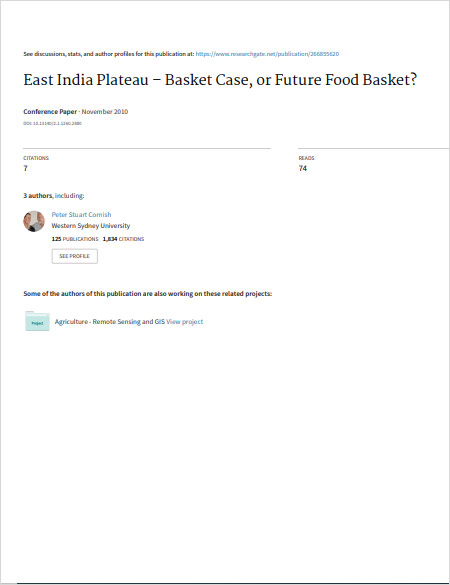East India Plateau Basket Case or Future Food Basket

The ‘green revolution’ brought national-level food security to India, but not to East India which remains one of the most densely populated, least developed and poorest regions on Earth. Rainfall is high (~1200 mm/yr) but seasonal, and there is little water for irrigated crops after the staple of rainfed rice, traditionally grown in the monsoon (kharif) on small fields on or adjacent to the valley floor (lowlands). Population pressure has forced rice onto nearby terraced and bunded ‘medium uplands’ where soil water measurements and crop modelling support farmers who say that water is insecure for rice. Frequent crop failures are unavoidable. Severe nutrient deficiencies were shown to reduce yield in good years. Participatory research with farmers developed options for better use of land and water resources, including crops for uplands (once seen as low value), alternatives to flooded rice in medium uplands, harvesting of rainfall for ‘rescue irrigation’ in the kharif and/or irrigation in the rabi, and rabi cropping using soil water left by rice. Farmers readily adopted new crops and intensive cropping when provided with options and personal experience that built confidence and local knowledge. Almost year-round systems now include vegetables, upland rice, mustard and wheat.

